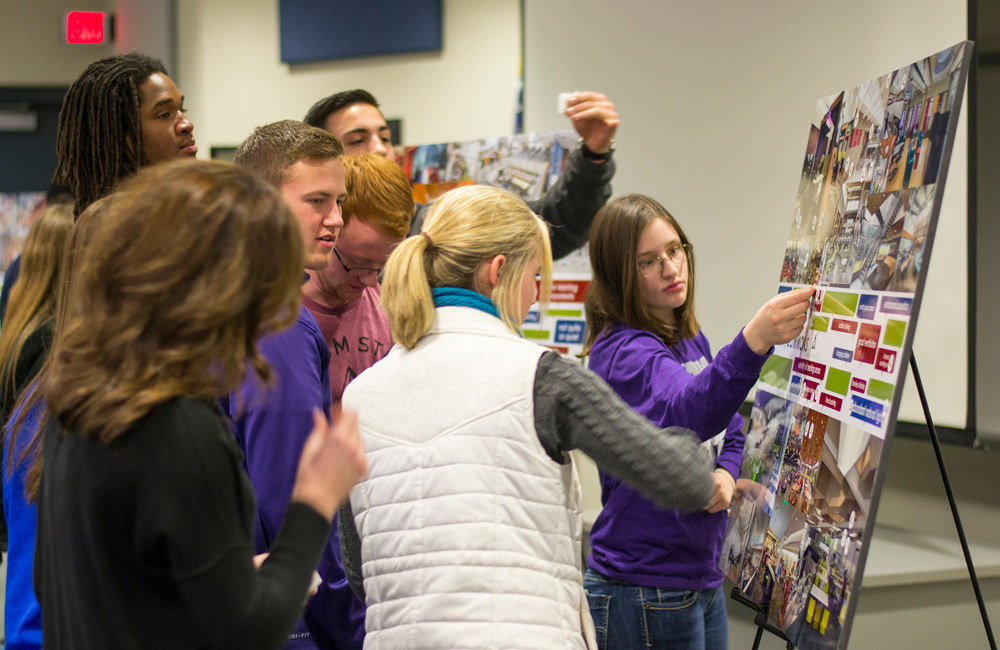
Reflections From Our Charrettes
The most meaningful instruction usually involves a 'hands on' approach where learning can be discovered involving collaboration, investigation, trial and error, and the manipulation of tools in order to deeply understand. The goal of a well-designed learning experience is to engage students. At VLK Architects, our charrette process incorporates these attributes while capturing the thoughts of our clients. Ultimately, as partners, we work together to ensure we respond to the design elements that are desired. In the end, our clients think like an architect while using their educational backgrounds to help us realize the best educational facilities, and our designs are recognized as uniquely independent, clearly articulating the needs of the community.
Reflection, as a powerful tool for learning, enables us to inform our practice to better serve the needs of our clients. Our own reflections this year have taught us a few things as well about our charrette process.
Accelerates the development of the vocabulary used in the design of a school.
Put fourteen educators in a room and ask them what a classroom looks like and guess what you get_fourteen descriptions. Through consensus building, we work with those fourteen educators to develop a collective, singular vision for the classroom they desire. We ask questions to ensure we address specific instructional needs, probing to detail the most important aspects of teaching and learning as they relate to space. Once vocabulary is developed, the language for the project is defined, which carries throughout the entire process, including construction.
Establishes Goals and Ownership through Consensus Building.
Although individuals begin the process with independent thoughts on design, the procedures we employ produce a unified solution that builds consensus for the project. Teamwork is paramount to the process, and by the end of the two days of working together, feasible solutions that reflect the ideas of all teams are represented. Engagement is realized.
Involving Students Creates a Powerful Experience
Districts who have invited students to the charrette process have provided the teams of participants with a real treat. The honest evaluation of spaces in schools, as articulated by students, is powerful to hear. They explain things that no one else in the room can fully visualize until they describe it. They have a unique way of sharing their thoughts, in their words, in order to make the conceptual design more meaningful.
In the end, our clients think like an architect while using their educational backgrounds to help us realize the best educational facilities, and our designs are recognized as uniquely independent, clearly articulating the needs of the community.
Works for a Variety of Spaces
Not only does the charrette process work holistically for overall design, it can also be used for specialized spaces. This allows the team to focus on the needed areas, and allows them to 'drill down' to a zone or department to thoroughly investigate the spaces, relationships, and components involved.
Creates a Safe Environment for Staff
Participants are asked to share their opinions, dreams, and wishes in order to capture the best conceptual design. The safe environment we create allows for honesty and expression by all individuals regardless of their position in the district, or the composition of the team. This freedom of expression facilitates equal voices throughout the process.
Emulates Inquiry-Based Learning
We launch the lesson with whole group instruction, allow for vocabulary to develop, and ensure the understanding of the intended outcome prior to assigning teamwork. Team roles are established, and independent project time begins, with each team knowing how to conduct any needed research, and how to solicit their coaches with 'just in time' support if needed. Ultimately, each team presents their project, or their findings, to all participants.
Most recently, Arlington, Houston, Katy, Keller, Plano, Tuloso-Midway, Waller, and Ysleta Independent School Districts employed our process; staff members and students become an architect for a day_ or two. Regardless of position, educators, by means of design thinking, are able to share their aspirations for the future of their respective districts, and to prepare for the children that will benefit from their forward thinking for decades to come.